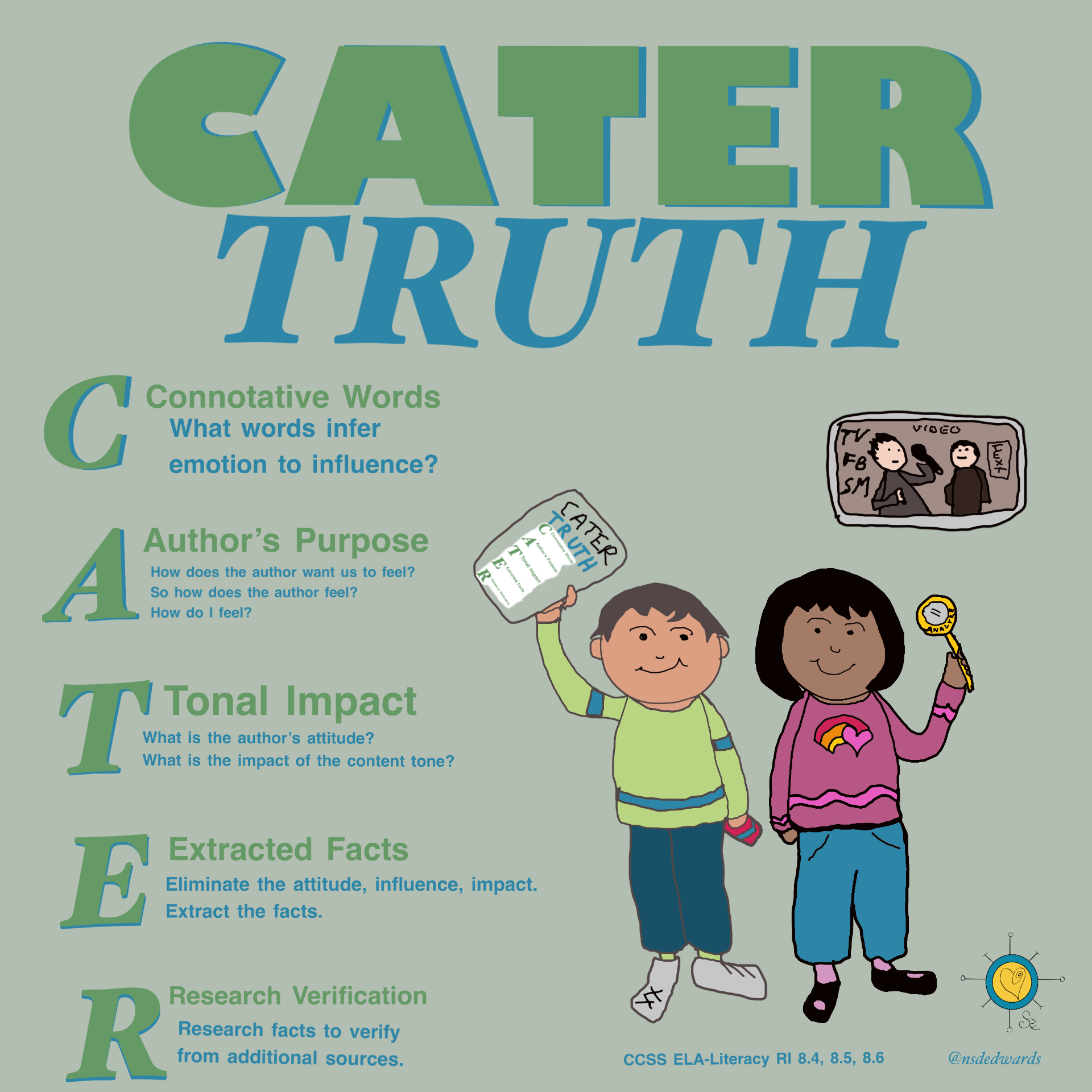I’ve been enjoying the course offered by KQED, “Finding and Evaluating Information. The course authors have added a wealth of information and links for helping all of us, adults and students, better evaluate the information around us in physical and online media formats.
As I read through the comments again of discussion, I was reminded of how important it is to analyze the words used by us and by others to understand the intent of the author in the message. The craft and structure of the information are designed for impact– so —
- What words have impact?
- Why were they chosen?
- What are the facts embedded in the influence?
How do we cater to truth?
I thought of this idea and created the above image for it:
CATER:
Connotative Words: What words infer emotion to influence?
Author’s Purpose: How does the author want us to feel? So how does the author feel? How do I feel?
Tonal Impact: What is the author’s attitude? What is the impact of the content tone?
Extracted Facts: Eliminate the attitude, influence, impact. Extract the facts.
Research Verification: Research to verify facts from additional sources.
As I read, and as my students read, these actions help funnel the information to find and evaluate the facts:
- As I read, I look for words that indicate bias– those that set of a feeling through their connotation.
- How do those words affect my feelings and indicate the author’s purpose and feelings?
- How do those words show the author’s attitude and therefore the tone of the content, which impacts the message and influence on the reader?
- So what are just the facts, separated from the attitude, the influence, the impact?
- What do others say and where are the origins of these facts? How do I know these facts are accurate? Where can I research for more information to verify the facts?
We need to cater to the truth and combat bias.
These actions emphasize Common Core Craft and Structure:
CCSS.ELA-LITERACY.RI.8.4
Determine the meaning of words and phrases as they are used in a text, including figurative, connotative, and technical meanings; analyze the impact of specific word choices on meaning and tone, including analogies or allusions to other texts.
CCSS.ELA-LITERACY.RI.8.5
Analyze in detail the structure of a specific paragraph in a text, including the role of particular sentences in developing and refining a key concept.
CCSS.ELA-LITERACY.RI.8.6
Determine an author’s point of view or purpose in a text and analyze how the author acknowledges and responds to conflicting evidence or viewpoints.
Resources:
Possible Lesson Plan for CATER
A Graphic Organizer for Analysis of Media
What strategies do you use
to verify truth of information?

